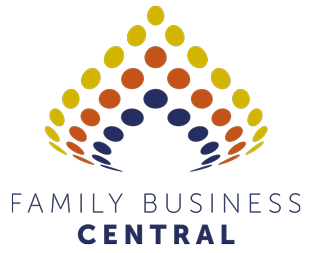
Family Charters are emotionally, not legally, binding — Why this is a critical difference
As many of you know, we spend much of our time working with family businesses, helping them to discuss and write their family charter.
A family charter is essential for any family business that wants to build and maintain good family relationships and build a successful long-term business.
By going through the process, a family fully understands the importance of the family charter and what it does for all its family members. Several clients who have gone through this process call their family charter the ‘Bible’ or, in one case, “the Rules of the Game”— it is seen as that significant to them.
So yes, we always encourage a family business to write a family charter — especially if they want to maintain good family relationships and build a successful business.
If this is where you are in your family business journey, it is vital to nail down the basics before moving on to more complex issues.
First things first – what exactly are family charters?
Family charters are one of several business and family documents that need to be developed by the family to build a lasting family business legacy. Other documents include shareholder agreements, business constitutions, board charters, trust documents, and wills.
The key difference is that a family charter is not legally binding — its power and authority come from being emotionally binding.
This is a significant difference — a document utterly central to guiding the family in how they conduct themselves as a family and as a business gets its authority from the strength of relationships and respect within the family.
The family charter is the core document that guides a family business into the future. It covers everything from the family’s vision and values to how the family manages money, supports family members, manages succession, sets up its board, defines who is on the family council and how the family resolves conflict.
It is important – and it only works because there is a real sense of buy-in from the family.
For this buy-in to exist, the family must see the relevance of and agree to the concepts, decisions and agreements in the charter.
And here is the rub…
How do we get the necessary emotional buy-in to make our family charter relevant?
Firstly, let’s think through exactly who needs to buy into this. Is it mum, dad, the kids? What about in-laws? What about grandchildren? Or other members of the family (adopted kids, for example)? All of whom may well be affected by decisions made in the family charter—both good (access to opportunities and money) and challenging (rules about coming into the business, pre-nuptial agreements, etc).
If we want all family members to adhere and be happy to adhere to the principles and decisions in the family charter, then it is critical that:
- They fully understand and agree with what is in there.
- They fully understand and agree with why it is in there.
- They feel a sense of ownership and belonging to the document — otherwise, it’s other people’s words.
- They agree with the decisions and see sense in agreeing to them — usually after much discussion and thinking time.
- They are happy with how the family charter will influence their children (who will be affected by decisions in the family charter).
This is a process that takes time and effort.
So how do we do this? How do we build this buy-in?
In terms of getting buy-in when writing the family charter, the obvious (but challenging) answer is to include everyone you consider family in the meetings where you are discussing and writing your family charter. And we have done this — as we have written before, we have had 16 family members in the room—everyone from the grandmother to the 15-year-old grandson—it was a fantastic process.
This decision did not happen overnight — we spent numerous hours with the grandmother and the current generation discussing who should be in the room, whether it was OK to cover all the issues that needed to be covered, and ultimately answer the question: Who is family, for them?
One of the main challenges is that family relationships, in their varying degrees, are inherently complex. Some families are uncomfortable with getting everyone in the room, so the other option is to engage people in key parts of the process — this is particularly important for the in-laws.
Sometimes, this is due to pure logistics; getting 16 people in a room for a day (let alone five days) is a big ask — there are children to look after, jobs to do, etc. So, we have had family meetings with members who can make it and, between meetings, get them to show the latest draft to their partners/spouses and get their feedback. We then also get the partners to come in for parts of the meetings that they can make — this could be a lunch or a drink afterwards, and they can then hear from us how things are going and ask us any questions.
This process works well.
There are other iterations of how you can do this, but keep in mind the aim: to get the buy-in of family members on decisions made and then written down in the family charter that they all agree to adhere to.
To discuss this and any other issues around your family business, please get in touch with Philip at philip@familybusinesscentral.com.

